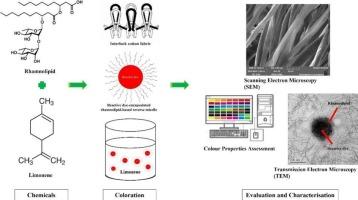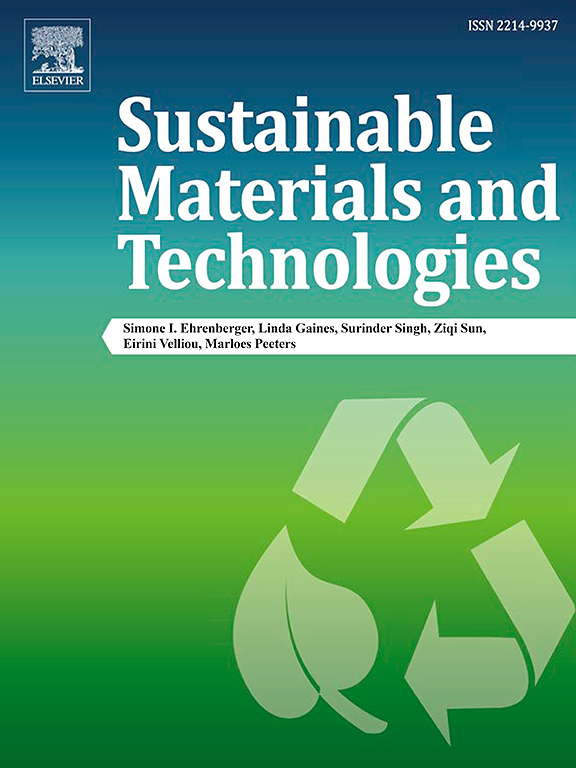Limonene biosolvent-based non-aqueous dyeing medium for salt-free and alkali-free rhamnolipid (RL) biosurfactant reverse micellar dyeing of cotton fabric with reactive dyes
IF 8.6
2区 工程技术
Q1 ENERGY & FUELS
引用次数: 0
Abstract
The feasibility of using different forms of limonene biosolvents as dyeing medium in rhamnolipid (RL) biosurfactant-based reverse micellar dyeing system for cotton fabrics is investigated, with different dyeing profiles. Experimental results reveal that limonene-dyed fabrics can achieve generally higher colour yield than water-dyed fabrics while samples dyed by one-step dyeing method could obtain higher colour yield, but poorer relative unlevelness index (RUI) values when compared with samples dyed by two-step method. The CIE L*a*b* value and reflectance of water-dyed and limonene-dyed samples were examined. The pH value of aqueous and non-aqueous dye liquor was measured. SEM images of limonene-dyed cotton fabrics and TEM images of reverse micelle morphology were evaluated. Washing and crocking fastness of the dyed samples were also assessed. The resulting evidence validate that limonene is feasible for reverse micellar reactive dyeing of cotton fabric with the use of RL biosurfactant and it can be one of the alternative solvents, making the dyeing process more natural, more biodegradable and environmentally more sustainable.

基于柠檬烯生物溶剂的非水染色介质,用于活性染料对棉织物进行无盐无碱鼠李糖脂(RL)生物表面活性剂反向胶束染色
研究了在基于鼠李糖脂(RL)生物表面活性剂的棉织物反向胶束染色体系中使用不同形式的柠檬烯生物溶剂作为染色介质的可行性。实验结果表明,与水染织物相比,柠檬烯染色织物的得色率普遍较高,而采用一步染色法染色的样品得色率较高,但与采用两步染色法染色的样品相比,相对匀染指数(RUI)值较低。考察了水染和柠檬烯染色样品的 CIE L*a*b* 值和反射率。测量了水性和非水性染液的 pH 值。评估了柠檬素染色棉织物的 SEM 图像和反向胶束形态的 TEM 图像。此外,还评估了染色样品的耐洗牢度和耐克牢度。结果证明,使用 RL 生物表面活性剂对棉织物进行反向胶束活性染色是可行的,它可以作为替代溶剂之一,使染色过程更天然、更可生物降解,在环境上更具可持续性。
本文章由计算机程序翻译,如有差异,请以英文原文为准。
求助全文
约1分钟内获得全文
求助全文
来源期刊

Sustainable Materials and Technologies
Energy-Renewable Energy, Sustainability and the Environment
CiteScore
13.40
自引率
4.20%
发文量
158
审稿时长
45 days
期刊介绍:
Sustainable Materials and Technologies (SM&T), an international, cross-disciplinary, fully open access journal published by Elsevier, focuses on original full-length research articles and reviews. It covers applied or fundamental science of nano-, micro-, meso-, and macro-scale aspects of materials and technologies for sustainable development. SM&T gives special attention to contributions that bridge the knowledge gap between materials and system designs.
 求助内容:
求助内容: 应助结果提醒方式:
应助结果提醒方式:


